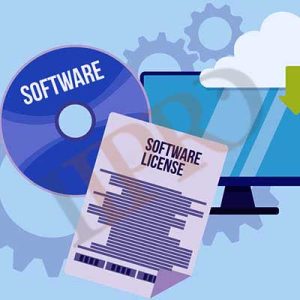A new era started with the innovation of Artificial Intelligence (AI). AI systems can produce…
The Work-for-hire Doctrine and Software Agreements in the United States of America

- It is a work prepared by an employee within the scope of her employment
- It is a work specially ordered or commissioned for use. To classify as a work-for-hire under this category, the work must fall under one of the following nine heads
- as a contribution to a collective work,
- as a part of a motion picture or other audiovisual work,
- as a translation,
- as a supplementary work,
- as a compilation,
- as an instructional text,
- as a test,
- as answer material for a test, or
- as an atlas,
Thus, for a work to qualify as a work-for-hire, it must necessarily fall under either one of the conditions mentioned above. This categorization becomes complicated while dealing with works such as the development of software. With the advancement of technology, several companies outsource the development of software to independent contractors. Without clear terms and conditions to the agreements involved this might lead to considerable confusion between parties with respect to ownership over the copyright. To that end, this article will analyze the applicability of the work-for-hire doctrine to the development of software, specifically in cases where this has been outsourced to independent contractors or in cases where the scope of employment remains ambiguous. The paper will also look at the necessary procedure that needs to be adhered to in order for a software program to classify as a work-for-hire.
Software as work-for-hire
Under the first category of 17 U.S.C §102 of the US Copyright Act (“Copyright Act”), a work would be considered to fall under the category of work for hire as long as it was created within the scope of employment. The application of this portion is not particularly contentious but would involve looking at the employment agreement and ascertaining the scope of the employment.
However, things become ambivalent while looking at the software created by a group of coders, either independently or when the terms of the employment agreement do not include specific provisions for software developments. A literal interpretation of the second part of 17 U.S.C. §102 of the Copyright Act would automatically disqualify software as a part of work-for-hire as it is not explicitly enumerated in the provision.
However, the United States courts over a few cases have held in dicta, that the work done for the development of software could be categorized as a work-for-hire; primarily because they are contributions to ‘collective works as listed in the second part of the conditions laid down. This was held in the case of IXL, Inc. v. AdOutlet.Com, Inc, where the court held that the ‘source code’ which was specifically commissioned for a particular software, would qualify as a contribution to a collective work. It further clarified that ‘the source code written for each section [of the website] would constitute a separate, independent work and is a contribution to the collective whole, i.e the website’.
Similarly, in the case of Stancard LLC v Rubard LLC, the court held that software developed for a particular company would be classified as a work for hire as long as there existed a written agreement between the parties. This case clarifies the necessary requirements which need to be fulfilled for software to be classified as a work-for-hire under the second category. An NDA titled “Inventions and work for hire” was considered sufficient to prove the intent and understanding of the parties for entering into a transaction that would confer ultimate rights on the employer. Additionally, the court held that the agreement should be signed by both the parties and that the party claiming ownership should prove that the parties had a prior understanding that the program was to be created as a work for hire. The given case interestingly also points out the fact that even though work might not qualify to be a work-for-hire, it might fall under the ‘assignment of copyright’ under 17 USC § 204. Thus, even if a particular software does not fall under the strict categorization of work-for-hire, it might still constitute an assignment of copyright according to the terms and nature of the agreement entered into.
Thus, the following three prongs would have to be fulfilled to categorize software as a work for hire under the second part of 17 U.S.C §102. This was also expanded on in the case of Inc. v. W.P. Stewart & Co
- The work should be “specially ordered” or commissioned: The court while relying on the case of Playboy Enterprises Inc. v Dumas, held that the test to be applied would be to determine what the motivating factor in the creation of the work was. If the parties enter into a contract for the creation of software for the motivation of a particular party or at the “instance and expense” of one party, they would in all probability be considered the owner. Thus, one would have to determine at which instance the software was created, or what purpose it ultimately served.
- That the work was commissioned for use as one of the nine categories listed in subsection (2): The court, in this case, held that the non-literal elements of a computer program are considered a “compilation” in so far as the ‘selection’, ‘arrangement’ and ‘organization’, central to the compilation doctrine, were included in the analysis of a computer program’s structure.
- That the parties expressly agreed in a written instrument signed by them that the work would be considered as a work for hire: Interestingly, in this case, the court held that a specific work would classify as work-for-hire, despite there being no explicit mention of the same in the agreement. In the given case the court held that the language used in the contract was sufficient to stipulate a work-for-hire agreement. [ Similarly held in the case of Warren v Fox Family Worldwide]
Conclusion
Through an analysis of the cases mentioned above and the relevant statutory provisions, it can be ascertained that a piece of software could constitute a work-for-hire, even in cases where it was developed by an independent group of people or when it was outside the scope of employment. However, this would be contingent upon the existence of a written agreement, signed by both parties. The nature and form of this agreement might vary, but the person claiming copyright over the final software, created by the third party should be able to prove that there was an understanding among the parties that the work so produced would fall under the scope of work-for-hire.
Author: Shrudula Murthy, a student of NALSAR University of Law, Hyderabad intern at IIPRD. In case of any queries please contact/write back to us at [email protected].
[References]
[i]Copyright Law of the United States, 17 U.S.C § 106
[ii] Copyright Law of the United States, 17 U.S.C § 201(b)
[iii] Copyright Law of the United States, 17 U.S.C §102



